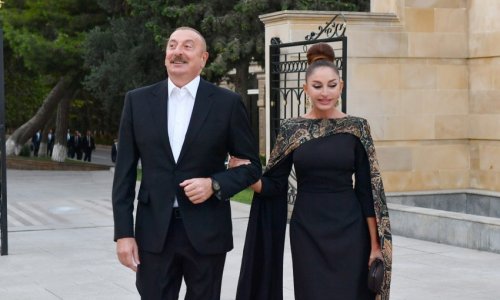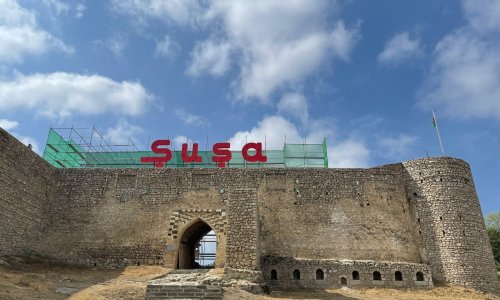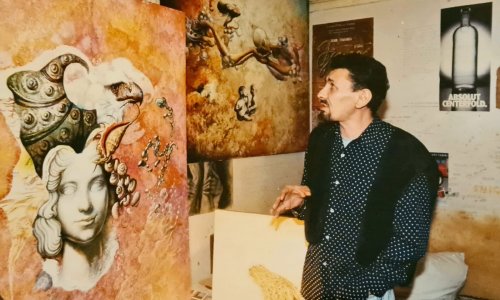The oil fields of the Caspian Sea have led to great wealth and prosperity, but "a disappearance of a natural way of life, and people who live between past and future values,” Mila Teshaieva says of the region defining itself after the Soviet Union.
"I could almost see the shiny new world rising out of the ruins,” says Ukrainian photographer Mila Teshaieva, describing the changes she witnessed on a visit to Azerbaijan in 2010, two decades on from declaring independence from the Soviet Union.
"The process of building a new state and a new national identity, something that would normally take many decades or even centuries, appeared to so rapid and so radical. But the ruins were still there, seen most strongly in the souls and minds of people who have grown up with and been educated in Soviet Union ideologies, but who have suddenly had to adapt to new ideas.”
Promising Waters looks at life in the area around the Caspian Sea, specifically Azerbaijan, Kazakhstan and Turkmenistan, countries that have established independence away from the Soviet Union, and that possess rich oil and gas reserves.
Teshaieva is most interested in the enormous challenge these countries face in defining themselves as independent nation states. Her project touches on the promise of wealth created by the countries’ natural resources, but also the effects of human endeavour on the societies, landscapes and environments of these places – the "disappearance of a natural way of life, and people who live between past and future values,” she says.
Implicit in the work, which she created during several trips over a four-year period, is the notion of national pride, the Berlin-based photographer explains, and how this is leveraged to encourage mass loyalty to the state.
"I try to convey the character of this pride [by depicting] past and current history. My intention is to pose questions to my audience about the meaning of beauty or the connection of state and individual, but also to allow the audience to formulate their own reflections.”
For Teshaieva, the work, which Kehrer Verlag published in book-form in 2013, falls within "the borders of documentary – coming to a place, spending time with people”, although she sensed what she calls a "staged performance” while making the series. "The construction of ‘a new state’ and new pride in these places seemed to me to be like a play where the environment is decoration, created especially for the play,” she says.
"This feeling of theatre influenced my approach to composition – for example, the frontal view, the distance between me and a subject, and the presence of multiple details inside the frame. I wanted the aesthetic of the work to enrich the topic.” [This was originally pirtched as a WIP. Have gone back to Gemma to check this and get that worked into the text.]
Finding ways to reflect invisible themes such as hope and disappearance was a challenge, she says, but long periods of research, as well as unexpected encounters, led to suitable subjects, places and stories. The experience, she says, was like gathering together pieces of a puzzle. "In the end, every photograph is a puzzle that contributes to the whole story, creating a link between past, present and future.”
www.ann.az
Follow us !











